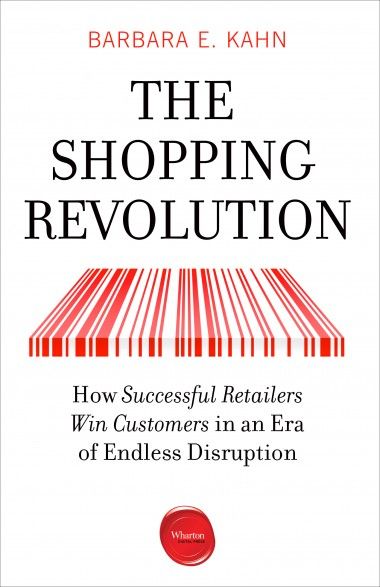The Shopping Revolution

Author: Barbara e. Kahn
Publisher: Wharton School Press
What: A new matrix to analyse the competitive advantage of a retailer
Why it is important: The matrix is simple to use and to understand, quite clear in terms of strategy involved in each of its quadrants. Even though the analysis dates from before 2020 and its multiple changes, the basis of the reflexion remain very valid and some of the points made by the author remain more relevant than ever today.
Barbara E. Kahn is Professor or Marketing at the Wharton School since 2011. Prior to that, she used to be Dean at the School of Business Administration, University of Miami. She has been a member of various consumer research bodies, and has extensively written on marketing, grocery and consumer-related topics.
The forces transforming retail
Barbara Kahn identifies 7 forces reshaping the retail business as we know it:
- Amazon and the notion of unlimited offer (endless aisle), superior customer management (Amazon Prime), and threefold business model helping to generate revenues while decreasing retail prices to the maximum (Amazon Web Services AWS and Amazon Marketplace generating the bulk of the profits, helping to “fund” the low operational margins at Amazon retail),
- Omnichannel shopping (with mobile phone shopping market share going from 2% in 2012 to 30% in 2020),
- Massive data collection (implying the necessity to be able to monetize what is collected),
- New retail tech (VR, AR),
- Vertical integration, with brands cutting the middleman and reverberating the savings on the final retail price, supported by a strong brand narrative,
- Real estate oversupply (in the US), while mall visits were halved between 2010 and 2013,
- New customers coming on top of millennials: Gen Z customers (less price conscious, more sustainability-oriented, not loyal to brands, digitally native, valuing experience over things, and in agreement to share data provided the experience is worth it).
As a consequence, there is a necessity to be customer centric, i.e. give customers what they want after having earned their trust, and, ideally, in a perfectly frictionless shopping process. Barbara E Kahn goes further by mentioning that in reality, retailers must do so better than the others.
For memory, this book was published two years before the 2020 pandemic that radically transformed the business, and it is interesting to see how the identified items remain more than relevant now.
The Kahn matrix
Barbara E. Kahn has developed a matrix helping to identify the type of competitive advantage owned by a market player, and identify further axes of development:

